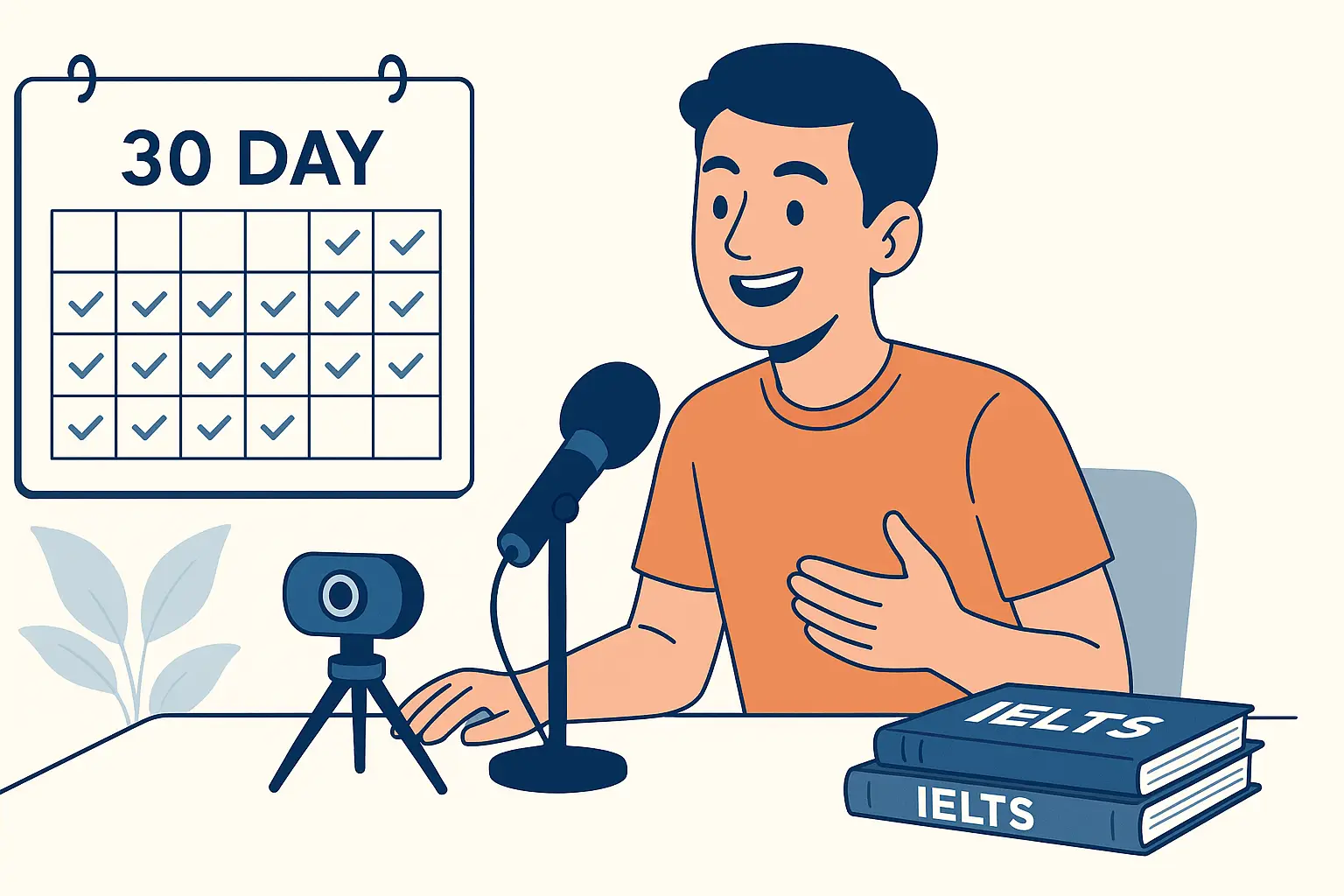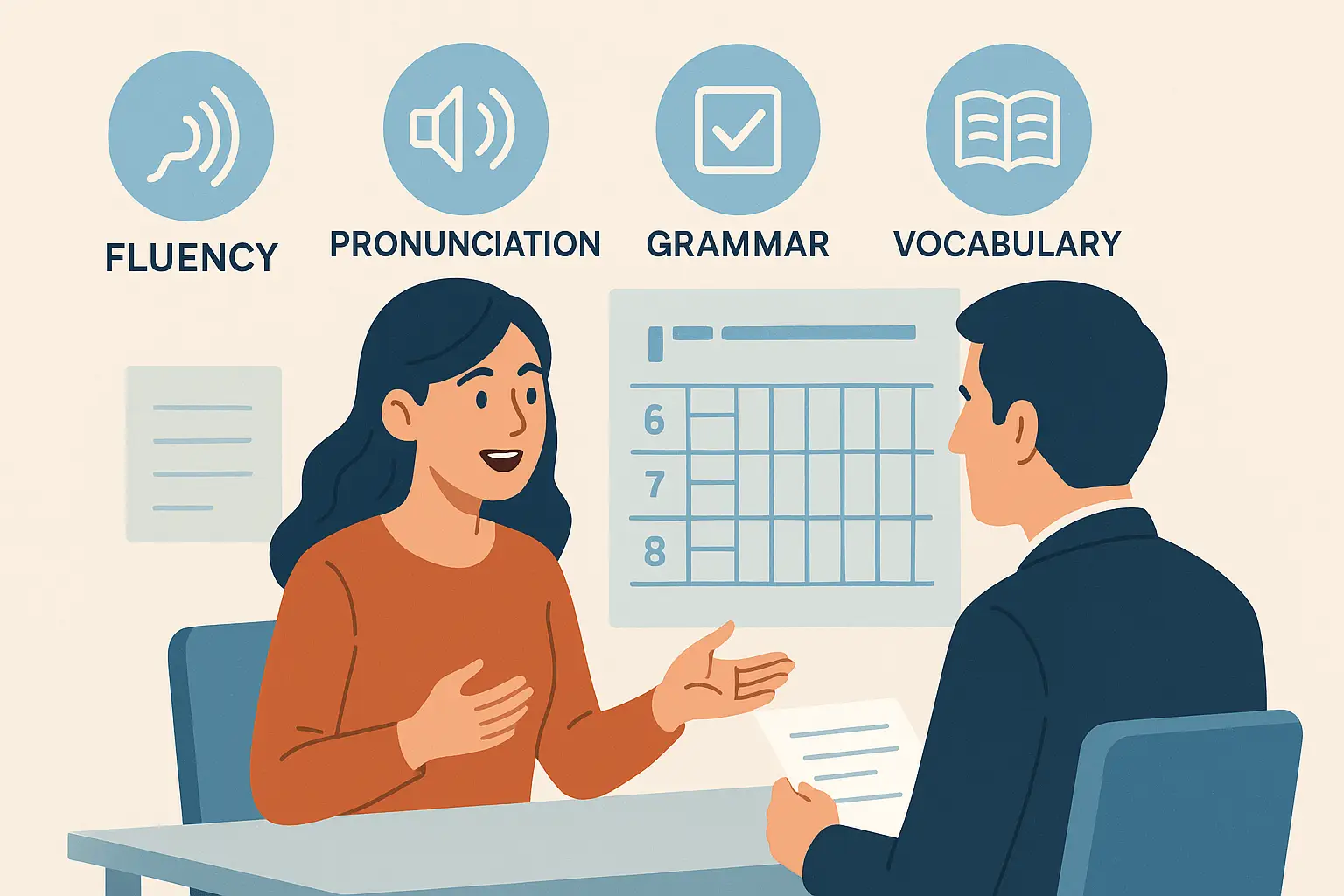As an international IELTS teacher helping students across the globe, one of the most common struggles I see is maintaining consistency and confidence in the IELTS Speaking test. Many learners jump between random videos, sample answers, or mock tests without structure—leading to confusion, burnout, or stagnation. That’s why I’ve created this step-by-step IELTS Speaking Practice Routine designed for 30 days—built on real student needs and proven success strategies.
Why You Need a Structured Speaking Practice Plan
I’ve taught hundreds of IELTS students from various backgrounds—engineers, nurses, homemakers, and university hopefuls. Most of them had two common problems:
- They didn’t know what to practise each day.
- They lacked a routine to stay on track consistently.
Without a clear IELTS Speaking Practice Routine, you might speak occasionally, copy Band 9 answers without understanding, or even avoid speaking altogether out of fear. But fluency doesn’t come from perfection—it comes from daily, focused speaking exposure and intentional reflection.
Your 30-Day Speaking Practice Blueprint
This plan is divided into four weekly themes: fluency, accuracy, strategy, and spontaneity. Each day has a purpose—so you’re never guessing what to do next.
🔹 Week 1: Laying the Foundations
- Day 1–3: Record yourself answering 3 common Part 1 questions daily. Focus only on fluency, not perfection.
- Day 4: Watch a British Council sample speaking video and write down natural phrases.
- Day 5: Talk about your hometown for 2 minutes. Use the vocabulary you noted.
- Day 6: Listen to your Day 1 audio again. Reflect: Did you pause too much? Use too many fillers?
- Day 7: Rest day (or revisit your favourite recording).
🔹 Week 2: Accuracy and Grammar Focus
- Day 8–9: Answer Part 2 cue cards using a structure (Introduction > Details > Example > Conclusion).
- Day 10: Pick 3 grammar mistakes from your recordings and correct them aloud.
- Day 11: Shadow a Band 9 speaker from IELTS.org. Repeat each sentence with the same rhythm.
- Day 12: Practice using complex sentences (e.g., although, despite, whereas).
- Day 13: Compare two things (e.g., city vs. countryside) for Part 3.
- Day 14: Rest and review mistakes.
🔹 Week 3: Strategy for Each Part
- Day 15: Review this complete IELTS Speaking guide to fully understand the test format.
- Day 16–17: Practice Part 1 using natural transitions like “Well, actually…” or “To be honest…”
- Day 18–19: Use this practice and common mistake strategy page to avoid typical traps in cue cards.
- Day 20: Practice 3 Part 3 answers, focusing on developing your ideas.
- Day 21: Take a full 11–14 minute mock test on video.
🔹 Week 4: Fluency + Feedback Loop
- Day 22: Ask a teacher, tutor, or peer to give you feedback on your recording.
- Day 23: Practice speaking with varied intonation and emotion.
- Day 24–25: Re-record your weakest answer from Week 1 or 2 and compare progress.
- Day 26: Try spontaneous topics like “describe a smell” or “talk about your childhood room.”
- Day 27: Record a Band 9 sample, then paraphrase it in your own words.
- Day 28: Take a mock test again (timed, recorded, realistic setting).
- Day 29: Listen to Day 1 and Day 28. Write down 5 improvements.
- Day 30: Reflect on your journey. Write a journal entry: “How my IELTS Speaking improved in 30 days.”
Benefits of Following an IELTS Speaking Practice Routine
Following a structured IELTS Speaking Practice Routine like this reduces overwhelm, boosts confidence, and ensures steady improvement. You know exactly what to focus on each day, instead of falling into the trap of over-preparing or under-practising.
My students who’ve followed this 30-day system have reported:
- Jumping from Band 6 to Band 7.5
- Feeling less nervous in the real exam
- Finally breaking the habit of using robotic, memorised answers
Remember, success isn’t about cramming. It’s about repetition, reflection, and building the muscle of spontaneous speech.
Final Thoughts
Whether you’re self-studying or working with a tutor, this IELTS Speaking Practice Routine offers a roadmap you can trust. It’s the same system I use with students in Tokyo, Lagos, Dhaka, and London—and it works.
Bookmark this post, print the 30-day plan, and commit to showing up for yourself. Speak every day. Review weekly. Believe that you can and will improve.
And when you’re ready, test your full knowledge with official mock materials from IELTS IDP.
FAQs: IELTS Speaking Practice Routine
Q1. Can I skip a day in the 30-day plan?
Yes—but try not to skip more than two days in a row. Consistency is more important than perfection.
Q2. What if I don’t have a speaking partner?
No problem. Record yourself daily. You can still build fluency through solo speaking and feedback review.
Q3. How long should I speak each day?
Start with 5–10 minutes and work up to a full mock test (15 minutes). Consistency > duration.
Q4. Is it okay to memorise Band 9 sample answers?
No. Learn the structure and vocabulary, but always express your own ideas naturally. Examiners spot memorisation easily.
Q5. How do I know my band level?
Compare your responses to official sample videos from IELTS.org or ask a qualified teacher for feedback.





2 Responses
Perfect piece of work you have done, this site is really cool with wonderful info .